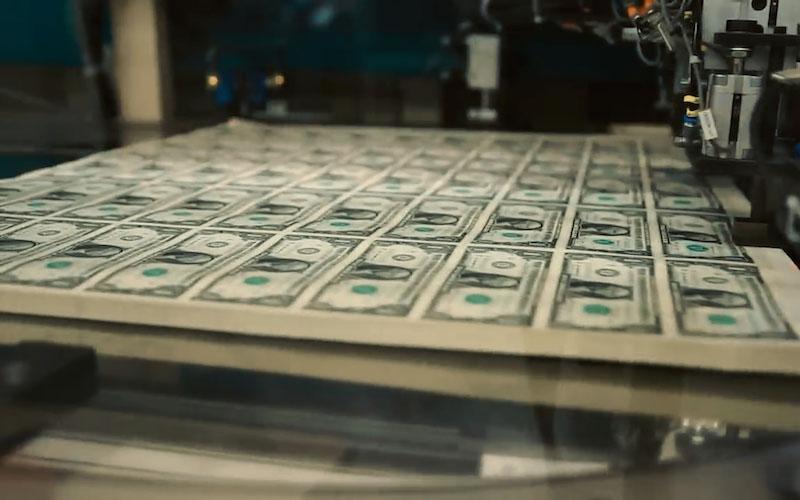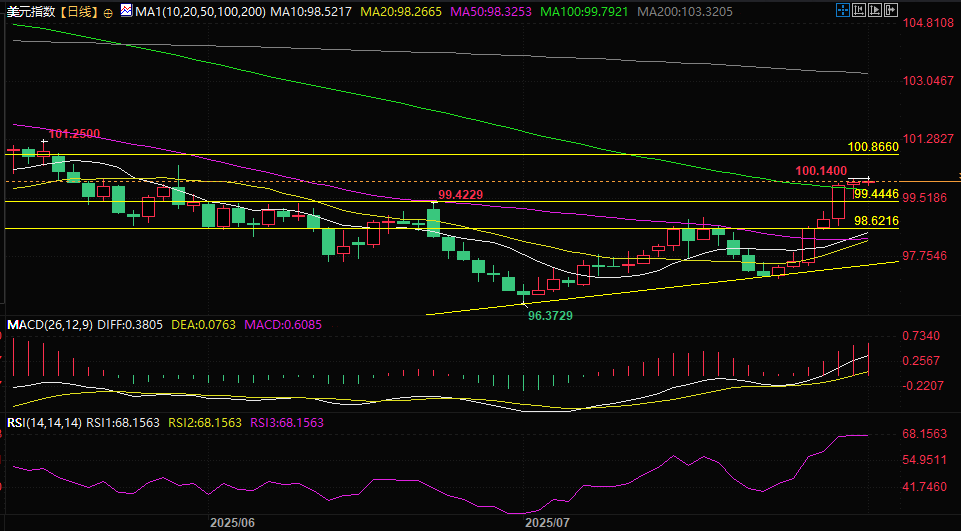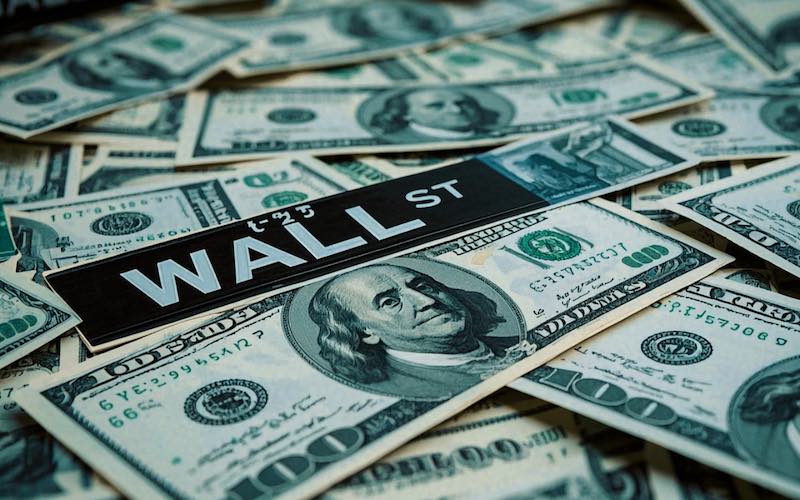The US dollar surged 2.5% in a single week! After six consecutive days of gains, there is still room for growth. Non-US currencies are collectively "fighting royale"!
2025-08-01 16:41:56

The US dollar led the market strongly, achieving its best single-week performance in nearly three years
The Trump administration's announcement of new tariffs on dozens of trading partners, including Canada, coupled with market expectations for Federal Reserve policy, has boosted the dollar. The dollar index is expected to rise 2.5% this week, its best weekly performance since September 2022 (up 3.1%).
On Friday (August 1), the US dollar index rose to an intraday high of 100.14 in the Asian session, setting a new high since May 29.
The US dollar held onto momentum against major currencies, hitting new highs.
The yen fell under pressure, triggering a warning from the Japanese government. The Bank of Japan stated that it was not in a hurry to resume interest rate hikes, causing the yen to continue its decline.
The yen hit a four-month low of 150.725 against the dollar, having earlier fallen to 150.915, its lowest since March 28.
Japanese Finance Minister Katsunobu Kato said authorities were concerned about recent exchange rate trends.
Tariff policies impact multiple currencies
Canada: The tariff rate was raised from the threatened 25% to 35%, and the Canadian dollar fell 0.12% to 1.3872, the lowest since May 22.
Switzerland: The tariff on Swiss imports was set at 39% (higher than the previously planned 31%), and the Swiss franc fell 0.26% to 0.8120.
Asian currencies: The Philippine peso fell to a six-month low, while the South Korean won took a hit, falling to levels not seen since mid-May, despite the two Koreas reaching a trade deal on Wednesday.
Euro: The euro remained near a two-month low of 1.1412 against the dollar, close to the low of 1.1401 since June 10, dragged down by an unfavorable interpretation of the US-EU trade agreement.
Short-term focus: US non-farm payroll data
The United States will release July employment data on Friday evening (August 1st). Economists predict 110,000 new jobs. Some analysts believe that if the data meets expectations, it could lead to a "Goldilocks" economic outcome, suggesting that the Federal Reserve could resume interest rate cuts without triggering market panic. Note: "Goldilocks" comes from the concept of "not too hot, not too cold, not too cold, not too hot, not too cold" in the fairy tale "Goldilocks and the Three Bears."
Despite Trump's overnight criticism of Federal Reserve Chairman Jerome Powell, calling his appointment a "mistake," the Fed kept its policy unchanged on Wednesday, citing "modestly rising" inflation and a "solid" labor market.
Mike Houlahan, director of E-Trade Financial Management, believes that the US dollar may strengthen further in the short term, and the impact of the tariff news has been partially digested; this week's downgrade of the euro's rating and unfavorable factors of the US-EU trade agreement have put further pressure on the euro.
Technical analysis: USD is bullish and could rise to 100.87
It has risen for 6 consecutive trading days, breaking through the double bottom pattern and consolidating strongly above the high of July 30 and above the 100-day EMA. The double bottom pattern measured the increase at 100.87.
If it weakens, the first support will be 99.44, which is halfway between the highest price on June 23 and the long bullish candlestick on July 30.
Both RSI and MACD show that the bulls are dominant and continue to rise.

(Daily chart of the US dollar index, source: Yihuitong)
At 16:37 Beijing time, the US dollar index was at 100.076.
- Risk Warning and Disclaimer
- The market involves risk, and trading may not be suitable for all investors. This article is for reference only and does not constitute personal investment advice, nor does it take into account certain users’ specific investment objectives, financial situation, or other needs. Any investment decisions made based on this information are at your own risk.





















